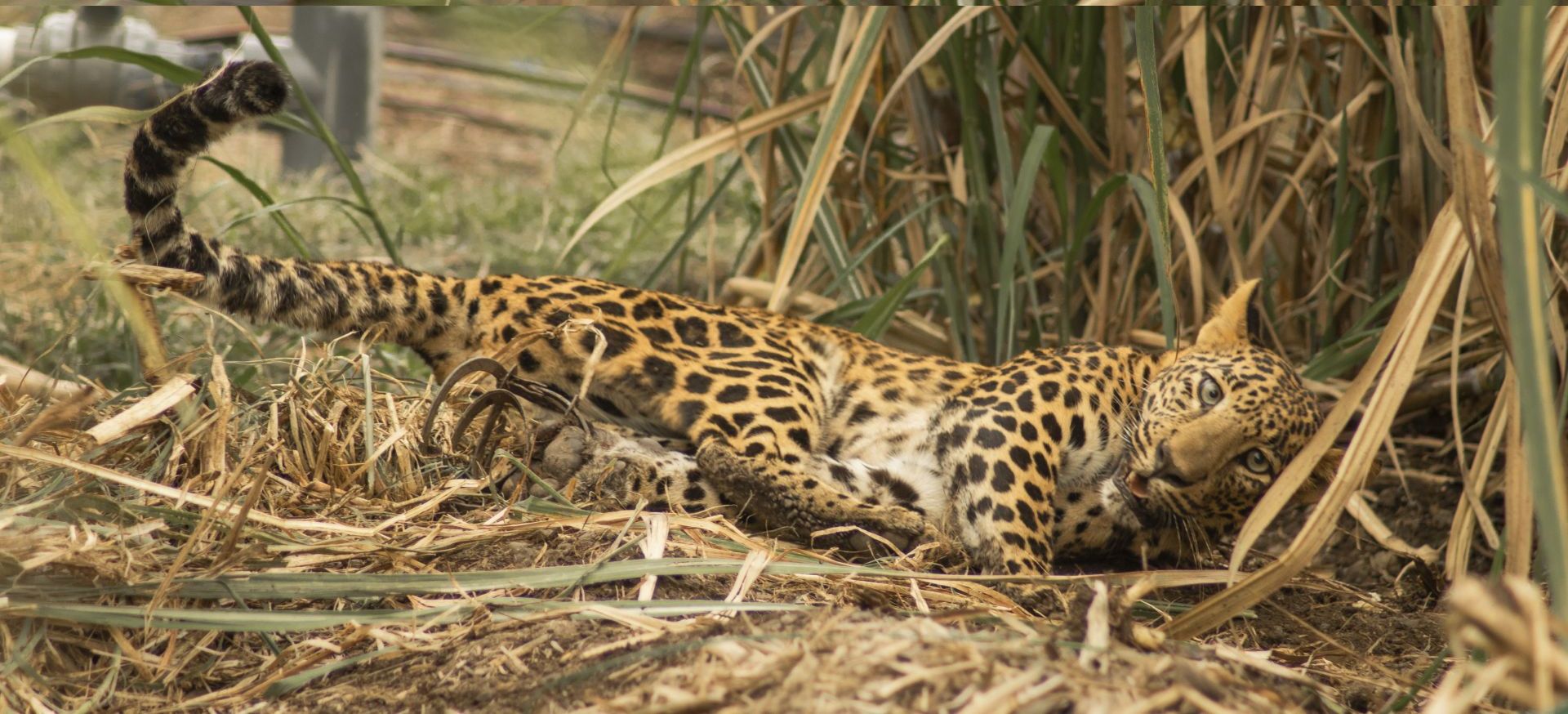Apart from food-laced explosives and pellets, DIY snare and jaw traps form a terrible threat to animals inhabiting the country’s forests. No other illegal hunting device can provide as long-drawn a death as these traps. Once caught, it is a commonly known fact that the animal can’t escape its lethal embrace. Every year, Wildlife SOS received a multitude of calls regarding animals trapped in such situations. Once a trap is set up, one can’t predict what animal gets caught. From jackals, hyenas, leopards and sloth bears, the traps do not differentiate between any animal.
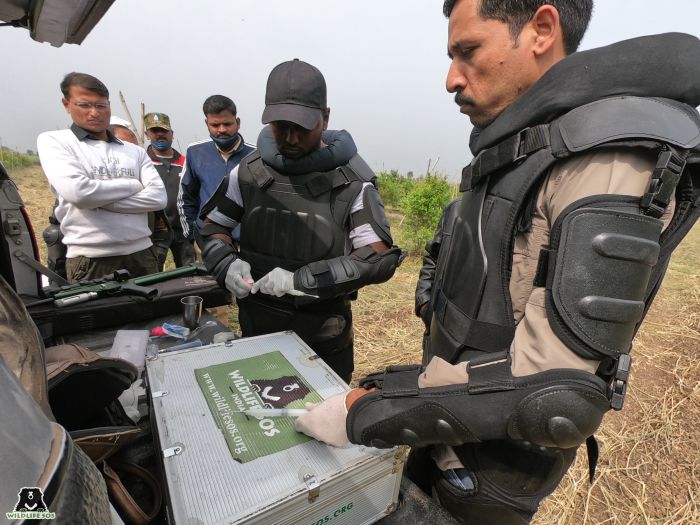
Jaw traps (called Khadka in Hindi) and snare traps are lethal hunting devices which can cause severe lacerations, joint dislocations, fractures and even death to wild animals. Animals caught in snares and traps often struggle for hours or even days before succumbing to thirst, hunger, strangulation, internal injuries, even predation from carnivores. Farmers often set up such traps around agricultural fields to prevent animals such as wild boars from raiding their crops. Occasionally, these silent killers are also used for bushmeat and it is also a popular device for poachers hoping to trap an unsuspecting wild animal.
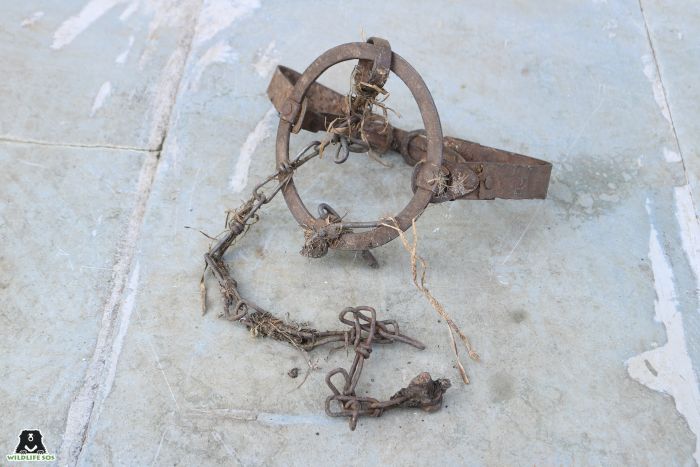
These traps are easily available and the commercial use of such tools is also taught by professional trappers in many parts of the world, online or otherwise. In recent times, we have seen a rise in the number of videos exaplaining the process of making these traps or setting them up in the best way to gain victims. While some snares are hidden in the dirt, dense forest undergrowth, or farmland fringes, most of them are concealed in the anticipated path of travel an animal may take.
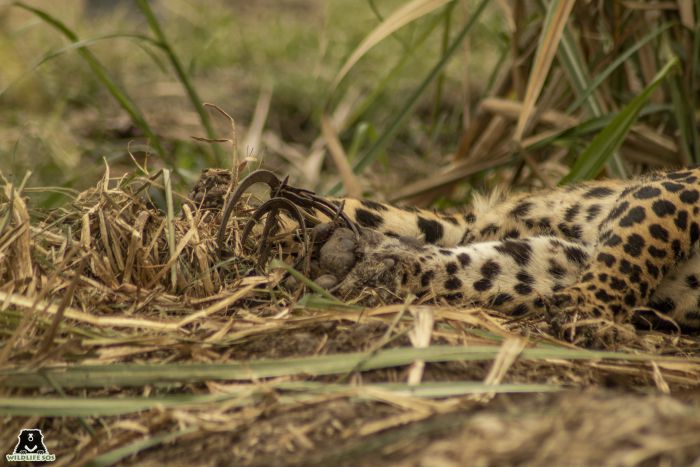
Jaw traps are primitive and unsophisticated, but their use remains widespread because they can be made at almost no cost and can take down anything from small animals like rabbits and foxes to endangered elephants. Some, such as tigers, bears and leopards have even been known to chew off their own limbs in order to free themselves. Animals that manage to escape often die days or weeks later as a result of their injuries. And this is not to mention the pain, terror, and anxiety that any trapped animal experiences.

In September & October, 2019 two sloth bears trapped in a snare trap were rescued by WSOS in Karnataka. Both of them required intense treatment before being considered fit for release in the wild. Another victim of such a trap was a hyena, rescued by Wildlife SOS from the outskirts of Delhi. The wild hyena had attempted to escape out of the wire snare left by poachers and the snare had instead twisted itself around the hapless animal. A few animals under our care – for example, the geriatric leopard Vitthal – have also faced the brunt of such a trap, thus making a life out in the wild impossible, even if their lives were saved by timely medical intervention.
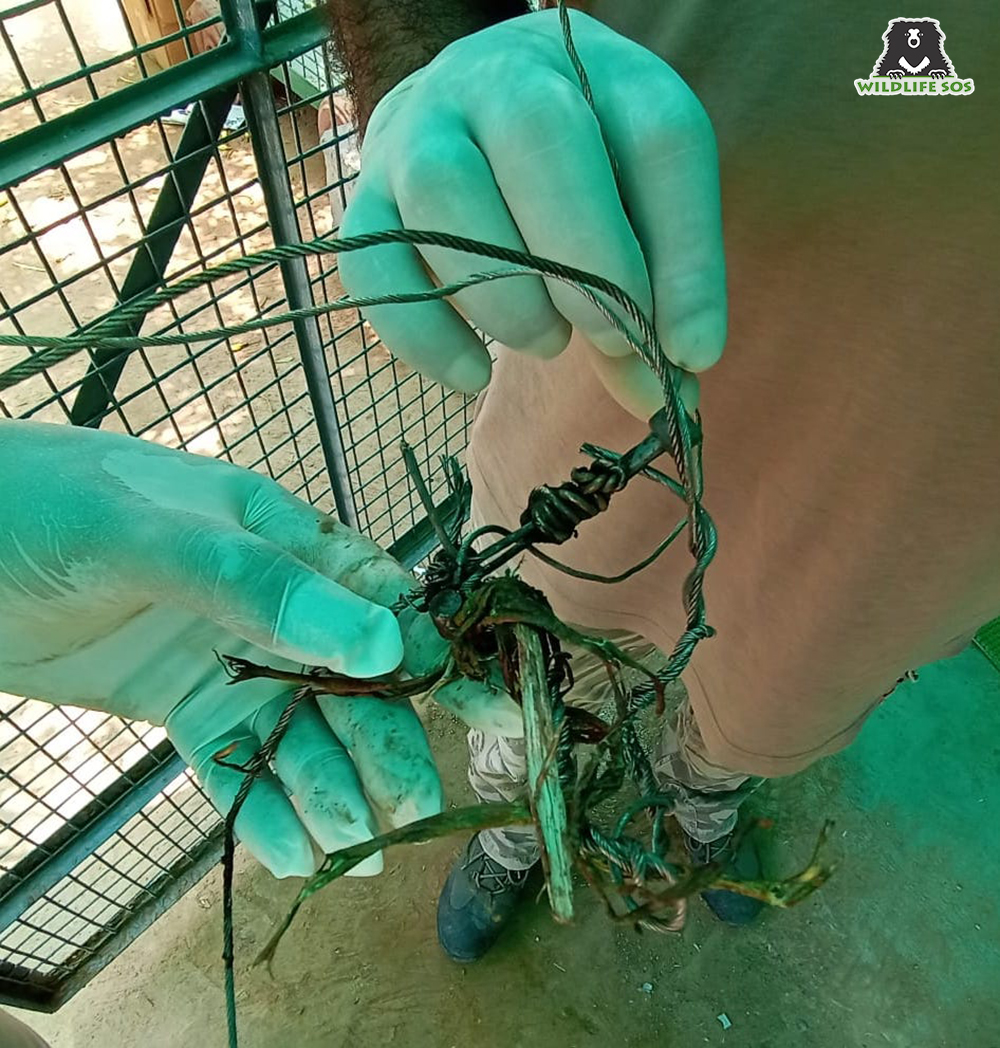
In the latest encounter of the WSOS team with a jaw trap, a three-year-old leopard was caught in a deadly jaw trap in Kurulii village, Shirur division, Pune. A four-member team geared up with safety nets, tranquilising equipment and protective gear to assist the Forest Department in the operation. When they arrived at the location, they observed that the big cat’s left forelimb was caught in the steel trap. Unfortunately, despite the successful rescue and following treatment, the leopard’s injuries were too extensive and it succumbed to them not long after.
This insidious threat must be tackled with the utmost severity to ensure that no more animals fall prey to the ghastly demise it inflicts.
You can find videos of animals being rescued from snare traps by Wildlife SOS, here

